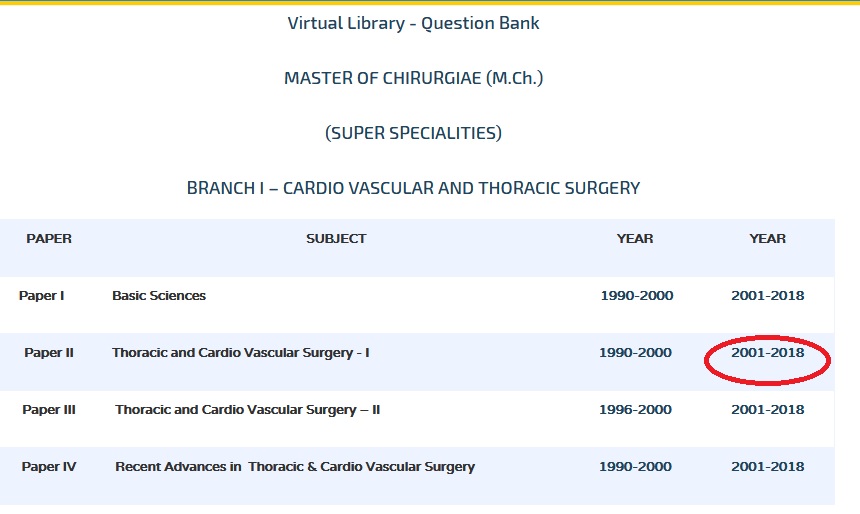Physical Medicine & Rehabilitation-III MD Question Bank : web.tnmgrmu.ac.in
Name of the University : The Tamilnadu Dr. M.G.R. Medical University
Degree : Doctor of Medicine (M.D.)
Branch : Branch XIX – PHYSICAL MEDICINE AND REHABILITATION
Subject Code/Name : 2074/PHYSICAL MEDICINE AND REHABILITATION – III
Paper : IV
Document Type : Question Bank
Website : web.tnmgrmu.ac.in
Download Model/Sample Question Paper :
2008-2014 : https://www.pdfquestion.in/uploads/web.tnmgrmu.ac.in/4341-202074KX.pdf
TNMGRMU Physical Medicine And Rehabilitation Question Paper
Sub. Code: 2074
M.D. DEGREE EXAMINATION
Branch XIX – Physical Medicine and Rehabilitation
PHYSICAL MEDICINE AND REHABILITATION – III
RECENT ADVANCES IN REHABILITATION AND COMMUNITY BASED REHABILITATION
Common to
Part II – Paper III – (Candidates admitted upto 2003-2004) and
Paper IV – (For candidates admitted from 2004-2005 onwards)
Related : Dr. M.G.R. Medical University Recent Advances in Endocrine Surgery & Investigations for Endocrine Diseases M.Ch Question Bank : www.pdfquestion.in/4605.html
September 2008
Q.P. Code : 202074
Time : Three hours
Maximum : 100 marks
Draw suitable diagram wherever necessary. :
Answer ALL questions. :
I. Essay questions : (2 X 20 = 40)
1. How will you institute rehabilitation of differently abled children in the Community in two adjacent districts? Out line the methods you will adopt for initial assessment, regular therapy and periodic follow up of these Children.
2. What is Functional Neuromuscular Electrical Stimulation? What are its indications? Discuss the therapeutic and functional use of FES in spinal Cord Injury.
II. Write short notes on : (10 X 6 = 60)
1. Rehabilitation following replantation of upper limb of the mid-forearm level.
2. Vestibular rehabilitation.
3. Splinting the hand.
4. Disability and rehabilitation as a human rights issue.
5. Burn rehabilitation.
6. Palliative care.
7. Dynamic posturography.
8. Shock wave therapy.
9. Recent advances in upper extremity prosthesis.
10. Types of feet in lower extremity prosthesis.

March 2009
I. Essay questions : (2 x 20 = 40)
1. Give an account of management of osteoporosis.
2. Discuss in detail about rehabilitation of a transtibial amputee.
II. Write short notes on : (10 x 6 = 60)
1. Sympathetic blocks for pain relief.
2. Dynamic posturography.
3. Legislations in relation to disability.
4. Disability prevention.
5. Environmental control systems.
6. Hormonal basis of menopause.
7. Vesico ureteric reflex.
8. Myositis ossificans.
9. Genetic counseling.
10. ASIA grading.
May 2011
I. Elaborate on :
1. Discuss the Recent advances in the pharmacological treatment of Spasticity.
2. Describe the merits and demerits of Community based rehabilitation and Institution based rehabilitation.
II. Write notes on :
1. Terminal devices of upper limb prosthesis.
2. International Classification of Function.
3. Radiofrequency neurolysis of facet joint.
4. Biomechanical principles in the design of quadrilateral socket for above knee prosthesis.
5. Proximal focal femoral deficiency.
6. Cruciform anterior hyperextension orthosis.
7. Thermoplastics.
8. Reciprocating gait orthosis.
9. Environmental control devices.
10. Brain plasticity.
April 2012
I. Elaborate on :
1. Outcome measures in spinal cord injury and its role in a rehabilitation programme.
2. Formulate a community based stroke rehabilitation programme through a primary health centre.
II. Write notes on :
1. Adaptive devices for independence with dressing.
2. Assessment of Visuo-spatial deficits.
3. Role of video fluoroscopy in swallowing dysfunction.
4. Role of leisure activities in a rehabilitation programme
5. Supported employment in Traumatic brain injury rehabilitation.
6. Advantages & Disadvantages of Observational gait analysis.
7. Components of a Power wheel chair.
8. Types of orthotic knee joints for KAFO. (Knee Ankle Foot Orthosis)
9. Prosthetic prescription for Syme’s amputation.
10. Various suspension systems for transtibial prosthesis.
April 2013
Sub. Code: 2074
M.D. Degree Examination
Branch Xix – Physical Medicine & Rehabilitation
Physical Medicine & Rehabilitation – III
(Recent Advances In Rehabilitation And Community Based Rehabilitation)
Q.P.Code: 202074
Time: Three Hours
Maximum: 100 marks
I. Elaborate on: (2X15=30)
1. Describe the biomechanics, components and advantages of plastic ankle foot orthosis. Describe the common indications for its use. Add a note on check out. Describe the use of patellar tendon bearing ankle foot orthosis.
2. Describe in details about disability evaluation and its implications in theIndian context.
II. Write notes on: (10X7=70)
1. Explain biofeed back and its clinical applications
2. Intrathecal baclofen for the treatment of spasticity and its limitations
3. Describe the methods of suspending transfemoral prosthesis
4. Explain the use of assistive technology for hearing impairment
5. Explain the principle and mechanism of dynamic response feet, give examples and mention the indication of its use?
6. Describe the therapeutic use of functional electrical stimulation as an orthotic device.
7. Explain the concept of body weight support ambulation training in spinalcord injury
8. Vocational rehabilitation of patients with spinal cord injury
9. Electrical stimulation systems for management of bladder incontinence
10. Describe the biomechanics of floor reaction orthosis and mention indication of its use.
October 2013
Sub. Code: 2074
M.D. Degree Examination
Branch Xix – Physical Medicine & Rehabilitation
Physical Medicine & Rehabilitation – Iii
(Recent Advances In Rehabilitation And Community Based Rehabilitation)
Q.P.Code: 202074
Time: Three Hours
Maximum: 100 marks
I. Elaborate on: (2 x 15 = 30)
1. Describe in detail about disability evaluation and its implications in the Indian context.
2. What are the different mechanisms of plasticity of the brain?Discuss how plasticity is useful in rehabilitation?
II. Write notes on: (10 x 7 = 70)
1. Describe the methods of suspending transfemoral prosthesis.
2. Explain the use of assistive technology for hearing impairment.
3. Describe the socket designs in transtibial prosthesis.
4. Clinical application of immunoblotting and immunostaining of muscle.
5. Describe the clinical utility of Sphincter electromyography.
6. Explain the principle, indications and technique of spinal cord stimulation to control intractable leg pain.
7. List the indications and procedure of video-urodynamics.
8. Discuss the principle, indications, side effects and complications of vertebroplasty.
9. Define and explain the principle of plyometric exercises.
10. Explain the use of computer aided design in prosthetic fabrication.